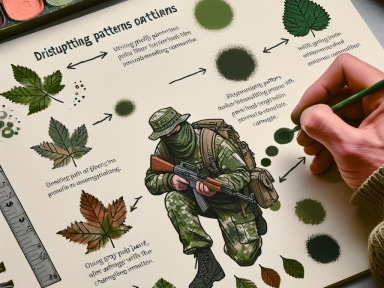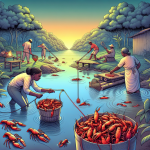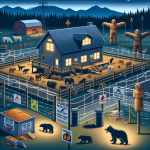Why You Should Learn DIY Camouflage Patterns
Camouflage is an essential skill to master when honing your survival instincts. Whether you’re venturing into the wilderness for an extended camping trip or preparing for a potential emergency scenario, understanding how to blend into your environment can mark the difference between life and death. DIY camouflage patterns not only allow you to adapt to a multitude of environments, but they also save you hefty sums of money on overpriced gear.
The Basics of Camouflage Patterns
Deep down, the essence of camouflage is about disruption. This means breaking up the outline of the subject to render it unidentifiable or at least, less noticeable. When we talk about DIY, creating camouflage patterns, we’re referring to methods like sponge painting or spray painting in an array of natural tones.
Sponge Painting
- Flat Colors: Begin with flat colors, choosing shades that match the predominant colors of your environment. When sponge painting, prepping with a solid base color like tan or brown is key.
- Sponging: Hold up your sponge and dip it into your chosen paint, then dab it onto the material. Continue this process using a variety of colors, lower layers first and highlights last. Always remember, however, that less can often be more. The sponge should not be overloaded with paint.
Spray Painting
- Prepping Your Gear: Start by cleaning your gear thoroughly before painting. Use a primer if necessary and note that lighter endorsements typically work better.
- Patterning: Lay out your patterns (perhaps using leaves as stencil) spritzing them onto your gear. Do so in a random, layered fashion with your color combination, paying heed to re-creatures the visual ‘’noise’’ you wish to emulate.
Adapting to Various Environments
Remember that effective camo always depends on the environment. Your pattern should match the season, location and your purpose. If in a pine forest, use shades of green and brown. In a snowy environment, whites and grays are your call of the day. Above all, stay adaptable. Nature is dynamic, and your camouflage should be too.
Getting it Right
Your DIY camo doesn’t need to perfectly imitate the environment. Your goal should be to disrupt your pattern and make you harder to spot. Blend in, but avoid aiming for perfection. Don’t put your life on the line because of a misplaced belief in needing “perfect” camouflage. Safety should always come first. Learn to camouflage yourself – not only will you save money, you may save your life.
Mastering DIY Camouflage
So, are you ready to become a master of disguise? Will you step up to the task of becoming invisible in the wild, or slump back against your armchair to browse another Amazon catalog? Here’s a thought: step away from the fear and bring it as your ammunition. Fear disappears once you master your surroundings, and with DIY camouflage techniques, you’re in control. Hold onto that fear, turn it into motivation, and go out and become a part of your environment.




GIPHY App Key not set. Please check settings